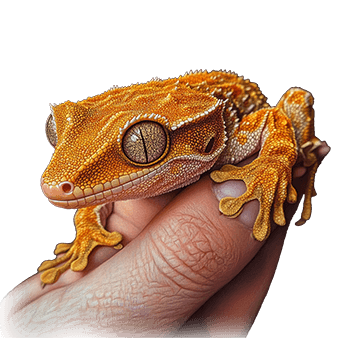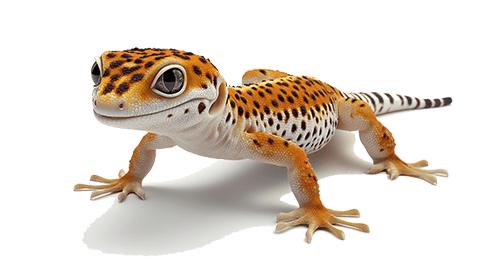Crested Geckos as Pets: The Ultimate Guide

Crested Geckos—also known as “cresties”—are quickly becoming one of the most popular reptile pets. Why? They’re low-maintenance, charming, and unique little creatures with personalities that are hard to resist. Originally from New Caledonia, an island in the South Pacific, these geckos were thought to be extinct until they were rediscovered in the 1990s. Let’s dive into why they make such great pets and what you need to know about their care.
Activity and Behavior
Crested Geckos are primarily nocturnal—they’re most active at night, which means during the day, you’ll often find them sleeping in odd spots like under leaves or perched upside down. Don’t be surprised if they seem lethargic during daylight hours. This nighttime activity makes them excellent pets for night owls, as they’ll be up and about when you’re winding down.
They’re known for being incredibly docile and handle stress better than many other reptiles. While they may be a bit skittish at first, once they trust you, they’ll comfortably hang out on your hand, climbing around and exploring.

Diet and Feeding Habits
Cresties are omnivores with an interesting palate. In the wild, they feed on insects, fruit, and nectar. In captivity, you can feed them a commercially available Crested Gecko diet, which comes in powder form—just mix it with water. This diet is balanced and provides them with all the nutrients they need.
For variety, you can offer them live insects like crickets or roaches once or twice a week. Just make sure the insects are gut-loaded (fed nutritious food), so your gecko gets the benefit too! Occasional treats like mashed-up fruits (bananas, papaya) are a fun addition, though the pre-made gecko diet often contains these already.
An interesting fact—Crested Geckos lick their eyes to keep them moist since they don’t have eyelids!

Sleep and Resting Habits
Cresties are primarily crepuscular, which means they become active at dawn and dusk. During the day, they’ll usually find a quiet, shady spot to sleep. They love to hide in foliage, cork bark, or little nooks in their terrarium. If you notice your gecko resting a lot during the day, don’t panic—this is completely normal for them.

Housing Requirements
These geckos thrive in a vertical terrarium—they love to climb and need plenty of height in their enclosure. The ideal setup will have lots of plants, branches, and hiding spots. They can stick to most surfaces thanks to the little hair-like structures on their feet, called setae, which allow them to cling to vertical surfaces like glass and even upside down! This climbing habit is one of their most entertaining quirks.
Humidity is key for their health—aim for about 50-70% humidity in the enclosure, misting it daily. You’ll also want to keep the temperature between 72-78°F during the day. They don’t need special UV lighting like many reptiles, but you should provide a natural day/night cycle for them using standard room lighting.

Relationship with Humans
Crested Geckos are very human-friendly. They rarely bite and tend to get along well with gentle handling. Over time, they can recognize you and seem to enjoy being held, though they won’t “cuddle” in the traditional sense. Patience is key—they’re more likely to bond with you after consistent, gentle interaction.
Another fun fact—Crested Geckos can drop their tails if they feel threatened (a process called autotomy), but unlike some other geckos, their tails don’t grow back. While a tailless gecko can live perfectly well, it’s something to be cautious of when handling them.

Interesting Facts About Crested Geckos
- Crested Geckos were thought to be extinct for over 100 years before being rediscovered in 1994.
- They come in a variety of morphs—different color patterns and shades, from creams to reds, yellows, and browns.
- Cresties can jump surprising distances for their size—though they often look clumsy when they land!
- Unlike some reptiles, they do not need a special heat lamp unless the room gets particularly cold.

Final Thoughts
Crested Geckos are a fantastic choice for both first-time reptile owners and experienced hobbyists. Their low maintenance needs, coupled with their friendly and curious nature, make them a joy to have around. They may not require as much attention as a dog or cat, but their quirky behaviors and easy care make them highly rewarding pets.
If you’re looking for a reptile that’s easy to care for but still full of personality, a Crested Gecko might just be your perfect match!
Further reading: “Everything you need to know about the Crested Gecko: Complete guide to better knowing and caring for your crested gecko” (Amazon affiliate link) by Adossa Thiago.
Affiliate Disclosure
This post may contain affiliate links, which means I earn from purchases made through links. Please see the privacy policy page for more details.






